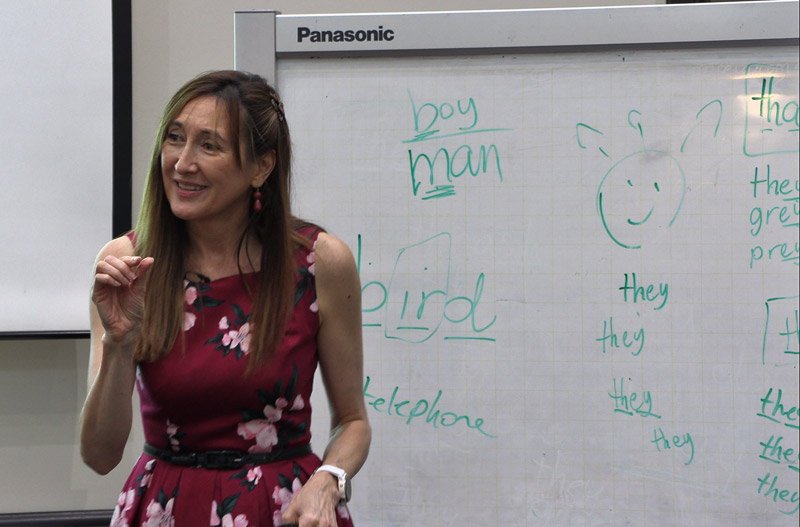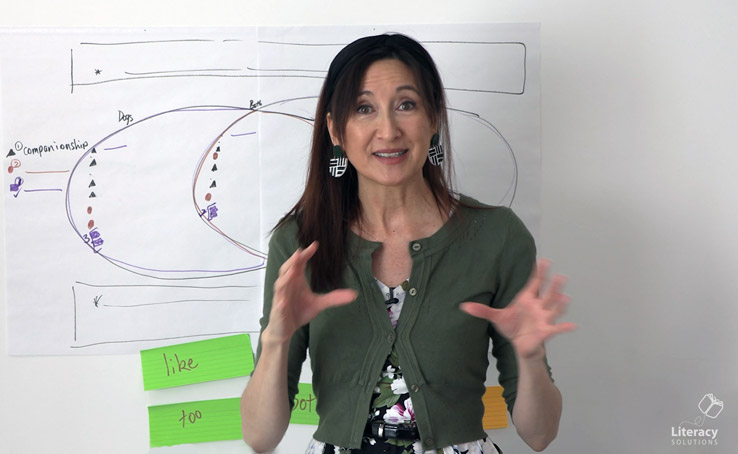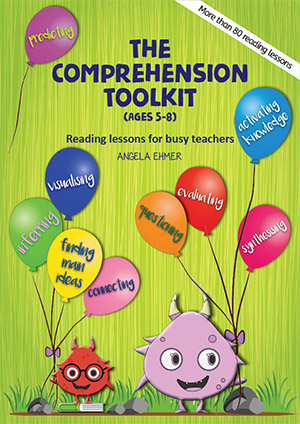Structured Reading
Many Teachers use components of Shared and Guided Reading as an approach to intervention. This strategy is a form of structured reading and can produce positive outcomes for students struggling with standard classroom teaching methods.
Structured Reading is a teaching approach for educators working with individuals or small groups of students. The approach blends shared reading and guided reading and also features some aspects of guiding reading. It is an effective strategy for harder to teach students and supplements the classroom guided reading program. When timetabling for harder to teach students, offer frequent, short bursts of instruction as opposed to longer, but less frequent teaching sessions.
Effective teaching approaches offer:
- regular, focussed mini lessons around targeted skills, actions or strategies and
- rigorous coaching to support students to transfer and generalise their learning across reading contexts.
The structured reading approach provides an additional layer connecting these two teaching approaches. Structured Reading is only suitable for students with control of one-to-one matching between the spoken and written word. It should not be used with students on Reading Recovery levels 1 or 2.
Aims:
- to lift the level of the text used for teaching reading to students sitting below the average in their year level cohorts
- to engage lower level readers in richer conversations around more interesting, challenging and age appropriate ideas than may be possible on lower level texts
- to teach using texts with a higher frequency of less common words and sentence structures
Group Size:
- can be larger than is advisable for guided reading, due to the supports provided by the teacher, however, the smaller the group, the more advantageous to students
Text Selection:
- texts should be interesting and engaging to students within the group; high interest texts are recommended
- harder texts than those used in guided reading lessons are selected, as the reading is supported by the teacher; texts several levels higher may be used
- students each need a copy of the text (multiple copies of texts are required; students cannot share texts)
Layout:
- Students seated around tables (U-Shape), with the teacher on a chair in the middle of the U-Shape, works most effectively and enables the teacher to be in close proximity with students by sliding in from the inside of the U-Shape. This makes all students accessible to the teacher, without the teacher needing to move quickly around the outside of a table. The floor should be avoided as it promotes slouching, lying down and moving about.
Before Reading:
The teacher:
- Engages interest, activates prior knowledge and introduces the text (usually up to 5 minutes of focussed conversation during which students recall what they know of topic, text type, idea, etc., discuss what the text may be about, read the blurb/summary on the back of the book, examine contents page, browse the text if applicable). Students build story or content knowledge during this time. If prior knowledge is lacking, this phase may be extended in order to build knowledge as required.
- Introduces challenging vocabulary which will appear in the text or section of the text to be read. Words are recorded on a chart or printed out for each student. The teacher reads the words as students look at the chart (or point to the words on the copy provided). The list is read again with students joining in. Any unusual or unknown words are discussed briefly.
During Reading:
The teacher:
- Reads a manageable section of text, as students track the text by sliding their finger beneath words as read.
- The teacher stops, briefly discusses aspects the text relating to meaning and asks students if they can locate any tricky words. Challenging words are discussed quickly and within the context of the reading. Note: Long breaks during reading should be avoided when reading narrative texts; the text read can be discussed in more detail where timely.
- The teacher and students read the text together (choral reading). If needed, the text may be reread to improve fluency, or if additional teaching is required around aspects of word work, grammar or meaning.
- The teacher continues reading sections of text, clarifying meaning, briefly locating and discussing challenging words as needed, and supporting choral reading. It is important to note that the overall purpose of reading is to comprehend. Word work should occur within the context of the overall reading (meaning making) experience; ensure that reading does not become a simply a code breaking task.
After Reading:
The teacher may revisit the text to discuss or highlight any aspect of code breaking or comprehension, relevant to the text. Any planned tasks should engage students in practising or applying reading skills and knowledge and target the particular needs of students within the group. Lengthy tasks involving cutting and pasting, colouring, etc. should be avoided. Quick activities promoting automaticity, or overlearning, of specific knowledge or skills may be useful.
Notes:
- The entire text does not need to be read in one sitting. The text is continued over subsequent lessons. It is helpful for students to revisit the sections of text already read, to build fluency and practise aspects of reading highlighted during teaching, and consolidate the text. Depending on the frequency of instruction and the length of the text, one text may be used over multiple lessons. If daily lessons cannot occur, it is helpful for students to meet once each day to briefly revisit the text already read. Choral reading is adequate to revisit. This need not be lengthy and may occur at the same time each day, to establish a routine. For example, immediately after lunch when students commence Uninterrupted Sustained Silent Reading (USSR), the Structured Reading group may quickly revisit the text as a group, before beginning USSR. No teaching is required at this time, so the time required should be brief.
- As students develop story or content knowledge, they become better positioned to “have a turn” reading the text. Prior to taking a turn, the teacher ensures that the challenging words for that section of the text have been revisited and may provide additional meaning or structural supports or prompts prior to reading. The degree of scaffolding is dependent on challenges the teacher identifies within the text and the knowledge of the reader. When one student is reading, the remaining students follow along.
- When the teacher anticipates that a section of the text is manageable, he/she may direct all students to read silently (or sub-vocalise). When this occurs, the teacher provides a high level of scaffolding prior to reading and may ask students to locate particular words within the text prior to reading. Specific reading prompts may be given to alert students to ways to problem solve challenging words.
- The sliding finger is a support which aims to shift students from finger pointing which develops stiltedness and discourages glancing ahead to check sentence length, upcoming punctuation, upcoming words and phrases, or other meaning supports. The sliding finger also encourages students focussing their attention on single words (which is promoted by finger pointing) to look through or across words from left to right, noticing the sequence of letters and letter strings. Students who substitute a word for one similar (e.g. substituting ‘of’ for ‘for’) should be encouraged to notice letter sequences. As phrasing and fluency improves, the sliding finger should be phased out. While some students do need ongoing supports to track the text, most do not.
*Note: Students must learn to place the finger beneath the first letter of the word and slide left to right as the word is read. This must be monitored closely in the early lessons as students pointing to individual words tend to point to the middle of the word, not the start.
Structured reading provides Teachers with yet another option for a strategic approach to improving classroom literacy.





Good ideas here. A refresher on what can be done to assist readers. Will give a run through to my aid and parent supporters to provide them with up dates.
A timely and worthwhile revisit of this strategy for me. There are a lot more really helpful ideas than a quick read conveys and I found a second perusal reminded me about the way of including longer texts in this strategy.
I think this method would benefit a number of my cohort; am happy to give it a try.
Always great to revisit and implement new strategies to assist readers. Love the ‘sliding finger’!
I am pleased to know that Literacy Solution has again provided educators with a source of innovativeness towards assisting students in the classroom who have challenges in reading. This will go a far way in assisting my teachers in our school’s Literacy Enrichment Programme. Thanks for the ideas.
This is a really timely article and will assist my program this term. Thank you.
Thanks for sharing your passion. Structured Reading – lots of common sense, effective ideas for working through reading with students. Applicable to different levels of development.
Provides teachers with even more sustainable teaching strategies for the teaching of reading – a revisit for some and easy ideas to take on board for others. Thanks!
Very clear and succinct explanation of a oldie but a goodie, reading strategy.
This information regarding structured reading is very timely for me. This will assist me with the group of children I am currently working with. Effective strategies and easy to follow. Thank you.
There are some really good ideas here to assist students with improving their reading skills.